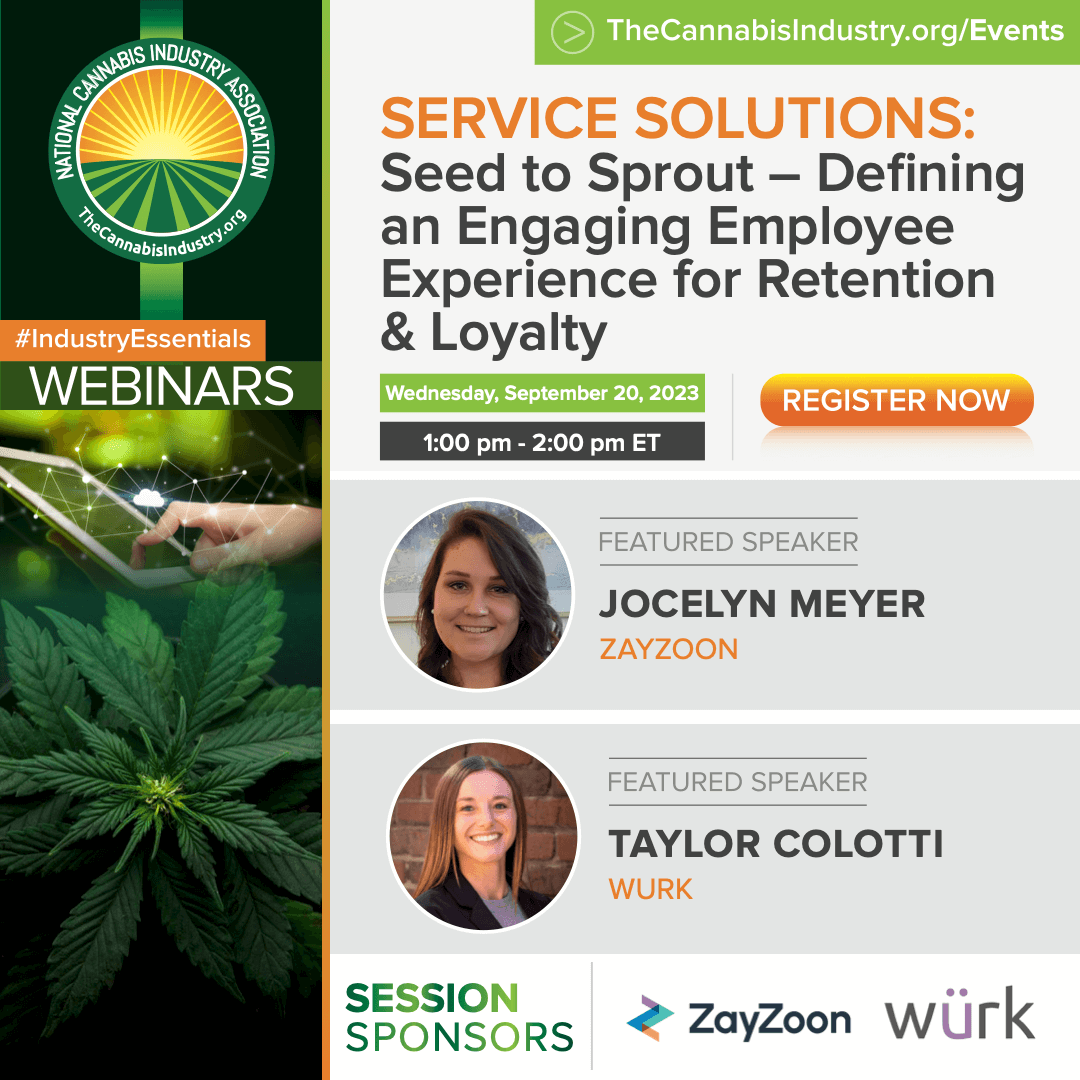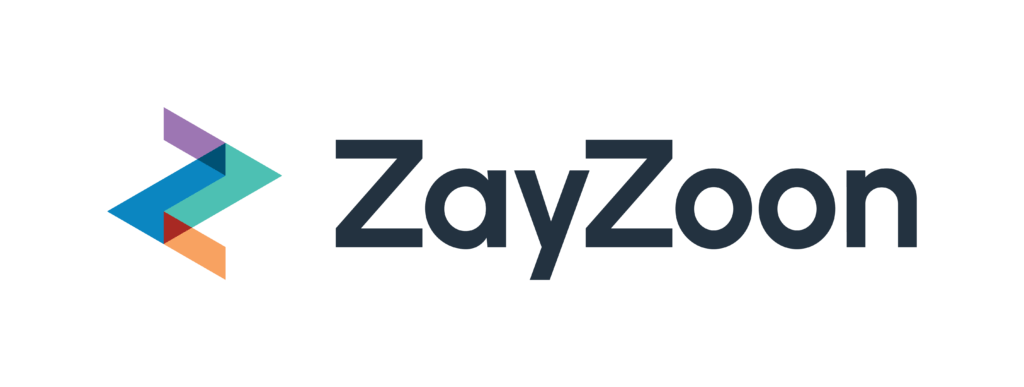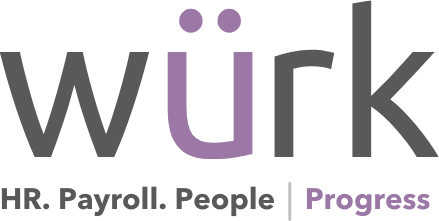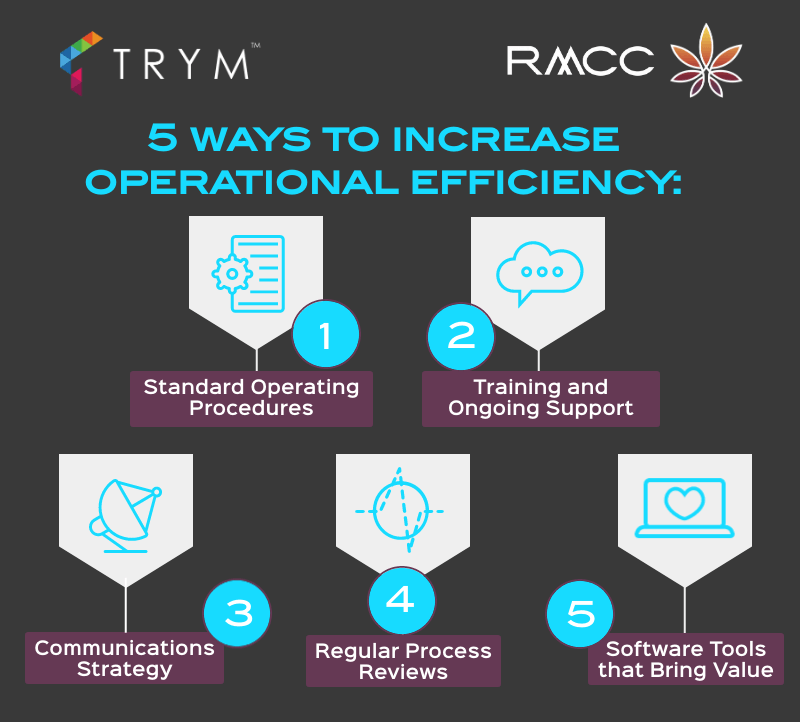Committee Blog: Time to Hire

The road to opening a licensed cannabis business is a long one. You have managed to navigate through a competitive and complex licensing process. You have convinced your local community to give your company a shot. You have beautified the area surrounding your business. You have secured your supply chain, and you even opened a special account at a cannabis bank to deposit all that cash. You have hired armed security, and even though you are paying the company 3X what you’re making, it’s okay because you and your staff are safe. You even survived the facility build-out, and hopefully, you have about six months of capital. What an accomplishment. Bravo! You did it! Wait… you need a team to help you operate this beast. Time to hire!
I heard someone say, ‘Great things in business are never done by one person. They’re done by a team of people.’ I would guess that if you have made it to the finish line, you’re likely to already have a team. Now it’s time to expand that team. As if the odds aren’t already stacked, in the fast-paced world of cannabis retail, turnover rates are hitting a staggering 55% within a year, per headset.io as of November 2023. I learned about this very early on when I began my research. I needed to know why and what I could do to avoid more than half my staff quitting within the first year. There were some common factors that led to employee attrition. I was a bit surprised to hear that pay wasn’t a top factor. What I learned was budtenders, in particular, didn’t feel the company provided any kind of staff development. Many instances described a poor management staff, and many felt unappreciated and overworked.
When we started this thing, it was important to make sure we could create opportunities for others. I’ve worked for both big and small businesses, some corporate and some non-corporate. I have had some good managers and some bad ones. I learned something from each job I’ve held. I vowed to make sure my staff never looked at our managers and our company and put us in the bad category. Trust is earned, and leadership can never be forced. I opened doors on April 22nd, and we hired 21 part-time employees. I will follow up in 12 months to see if I beat the odds. I’ve done it before.
It was through the NCIA network I met Carlo, and he had me go through a workshop. What I learned was, first, we needed to ask ourselves: What are our principles at Banyan Tree? My team is amazing, and we have been together so long we trust in each other’s expertise to maintain a harmonious environment. We want to make sure the staff feels the same way. So collectively, we created a list of principles. Next, we posted the job position. The response was overwhelming. Within 24 hours, we had close to 500 applications. We narrowed that down to 50. We scored the candidates based on their work experience and the video response they provided, aligning with our principles. Next, we scheduled the interviews. We called each candidate to share what they could expect during the interview. We sent them the list of our principles. We would be conducting the interview using the S.T.A.R. method: Specific, Task, Action, Result. That means the questions we ask will all be related to their work experience. We expect the answers you give to describe an experience that uses the S.T.A.R method response. It really helps us get to know the candidates during the interview, and you can tell someone is being genuine when they can recall an experience they had while working at previous jobs. There were about 21 of those interviews that went on for a full hour. We hired 21 amazing people. They all feel like they are part of something special. It’s my job to keep my promise.
It’s important to continue developing and educating the staff to help them get better at their skill. It is necessary to provide them with the tools they need to perform their job. Stuff like scanners and POS systems and card readers need to work. Technical issues disrupt the flow, but that’s controllable. Communication and trust are key. Without it, you’re doomed. Appreciation and praise go a long way. We need customers to stay in business, but we can’t do business without staff. My philosophy is that my employees are everything. As long as they love their job, our guests are going to reap the benefits.
Service Solutions: Seed to Sprout – Defining an Engaging Employee Experience for Retention & Performance

NCIA’s #IndustryEssentials webinar series is our premier digital educational platform featuring a variety of interactive programs allowing us to provide you timely, engaging and essential education when you need it most.
Cannabis businesses have faced many challenges in the past couple of years. While all organizations are struggling with an exhausted workforce, competitive talent acquisition, and maintaining costs – the cannabis industry is one of the hardest industries in terms of high turnover and low engagement emphasizing the need to address workforce reductions and support remaining employees. When the average cost of replacing an entry-level worker is up to 50% of their salary and high-level workers up to 400%, it’s time to get serious about your employee experience.
The experience you provide for your employee is not only a strategy to maintain your workforce but also to provide a quality work-life for all your staff. Taking care of your employees with the culture you build, transparency you convey, and clear communication, fosters a company community that helps drive a positive experience.
Join us for this educational webinar as we examine the employee experience and why it should be a key area of focus for your business. Understanding and prioritizing the overall engagement of your employees, will save your business money, boost productivity, and improve your bottom line.
Learning Objectives:
• Defining the Employee Experience & the Value it Brings to Your Business
• Ways to Improve Your Experience Right Now
• Outlining Top Trends to Incorporate into Your Strategy
• How to Develop a Framework for Success
Panelists:
Jocelyn Meyer
Leader of People & Culture
ZayZoon
Taylor Colotti
Manager of People & Development
wurk
Sponsored By:


Member Blog: As a Leader, You’re in the Business of Talent. That Means Your Top Priority Should Be Your People.

By Charlena Berry, Cannabis Business Growth
The following is adapted from Breaking the Stigma.
As a leader (especially a leader in the cannabis industry), you’re in the business of talent — identifying it, hiring it, developing it, and retaining it. Your top priority should thus be your people.
The first place to look to see if you have a people problem in your company is employee turnover. You can’t (and shouldn’t want to) completely avoid turnover, as it’s natural for some employees to move on and, occasionally, you will make hiring mistakes and need to let people go.
However, if you have high employee turnover — say, as high as 20 to 30 percent over the course of a year — it’s a sign you have an illness in your company. While this figure may seem low, traditional retailers aim for an even lower turnover rate. To calculate turnover, divide the number of employees that left the company by the total number of employees. For instance, if 30 employees out of 100 employees leave in the course of a year, your turnover is 30 percent.
If your employees don’t want to work at your store, do you think they’re going to create the kind of environment that customers want to shop in? Probably not. And if a good portion of your employees are in training and don’t yet know what they’re doing, is that going to create a delightful customer experience? Again, probably not.
The good news is that there are steps you can take — which I’ll share with you here — to reduce turnover and prioritize your people. Ultimately, by implementing some or all of these strategies, you’ll be able to offer your people the greatest possible experience. That will benefit not just them, but your organization and your customers as well.
Adopt the Leadership Mindset
Many factors can contribute to turnover. If you’re not offering compensation and perks that are on par with other cannabis retailers in your area, for instance, you’re likely to lose employees.
The biggest factor, though, is leadership. You might have heard the saying before that people don’t leave companies, they leave managers. If your management team makes employees miserable or doesn’t make them feel valued, they’ll leave.
If, on the other hand, you adopt the leadership mindset and take the time to train managers to form a personal connection, be curious, empower, develop, and inspire your employees, they’re more likely to stay because those elements create a rewarding, enjoyable work environment.
Promote From Within
It’s also critical that you establish a practice of promoting from within. If your employees don’t see any growth opportunities within your company, they will be forced to leave to progress in their careers.
Promoting from within also just makes good business sense. Who knows your store and your company culture better than the people who already work there? When you promote an employee to a leadership position, they can hit the ground running.
Especially as you scale, promoting from within is key to implementing a seamless customer experience across multiple locations. When a role is empty, it disrupts the continuity of operations. Imagine a ship whose captain is swept overboard. You need a second-in-command ready to step up and fill the role.
Focus on Diversity, Inclusion, and Equity
As you hire and build paths to leadership positions for your employees, keep diversity, inclusion, and equity in mind. With the long history of people of color being disproportionately impacted by the war on drugs, the very least we can do as retailers is ensure we are being fair and creating opportunities in our hiring and promoting practices.
Plus, diversity leads to better business results! McKinsey & Company found that companies in the top quartile for ethnic and cultural diversity in executive teams outperformed those in the bottom quartile by 36 percent.
Understand When to Let People Go
As unpleasant as it can be, the final aspect of managing the talent of your company is understanding when to let people go. Every employee is a representation of your company and contributes to the customer experience. You can’t afford to have subpar employees when you could put someone incredible in that role — someone who will make a difference in terms of how customers think and feel about you.
If a team member isn’t living up to the expectations of a role, you need to provide clear, regular feedback about what needs to change. Employ your curiosity and ask leading questions to try to mold them into the role: Why do you do things that way? Have you thought about other ways to do it? What if you tried x or y?
If after several months, they’re still failing to meet expectations, they’re probably not a good fit for the role. At that point, you can either try to find a different role for them if you think they could still make a valuable contribution or let them go. You can’t expect people to magically know everything they need to know and perform well in a role without guidance and training, but you also can’t expect everyone to be a good fit.
Turnover is Expensive
Bottom line, turnover is expensive, both financially and culturally. Every time an employee leaves, you have to pay the costs of onboarding and training a new employee. According to Gallup, that cost can range from one-half to two times the employee’s annual salary.
It’s far cheaper — and results in a better customer experience — to retain and develop your current employees. Turnover also damages your company culture. When you have many empty positions or many new employees in training, it increases the pressure and stress on your veteran employees. It can trigger a wildfire of employees leaving, which lowers morale and disrupts team dynamics.
As a leader, it’s easy to get caught up in the minutiae — emails to answer, decisions to make, spreadsheets to review. Those tasks are important, but the area where you can have the most impact is in people’s development. When you put people first, it’s like dropping a rock into a still pond, spreading ripples throughout the company.
 For more advice on actionable strategies you can implement that put your people first, you can find Breaking the Stigma on Amazon.
For more advice on actionable strategies you can implement that put your people first, you can find Breaking the Stigma on Amazon.
Charlena Berry is the author of Breaking the Stigma: Racism, Lies, the Opioid Endemic, and Inviting Grandma to the Dispensary. In this book, she exposes lies that created the stigmas associated with cannabis, and how these stigmas must be addressed to see continued growth in the marketplace. She then outlines a framework that provides key strategies for retailers to implement to improve the customer experience and increase profitability.
Writing from her experiences in the industry, Charlena is a global cannabis business executive and the founder of Cannabis Business Growth, a premier cannabis business consulting firm. Prior to that, she spent more than a decade in Supply Chain and Retail Operations for Fortune 500 companies like Whirlpool and Office Depot/Office Max. She also serves as the Chief Operating Officer for The Cake House, a chain of dispensaries in Southern California.
Member Blog: Compensation in the Wild West of Cannabis

 by Fred Whittlesey, Founder, President, and Principal Consultant of Cannabis Compensation Consultants
by Fred Whittlesey, Founder, President, and Principal Consultant of Cannabis Compensation Consultants
Member of NCIA’s Human Resources Committee
At the NCIA Cannabis Business Summit & Expo next week, there will be a panel session titled Cultivating Your Workforce. As a member of the NCIA Human Resources Committee, I have been actively involved in putting this together, and as a compensation expert, I wanted to ensure there is going to be, of course, a lot of discussion about compensation – executive compensation, incentive compensation, and employee ownership.
It’s appropriate that this month’s #CannaBizSummit is being held in San Francisco, arguably the historical culmination of Wild West culture, with the Gold Rush as its driver. Not unlike today’s cannabis industry – a gold rush of sorts, by federal definition a lawless community, and a community culture of moving fast and defining as we go.
As a compensation expert, I typically prefer a more orderly and well-defined world, which is why I am fascinated with working in the field of compensation in the cannabis industry. It’s challenging because I am in the business of answering clients’ questions about compensation. It’s not always easy to do in cannabis.
There are three factors that explain where we are today in understanding and analyzing compensation levels and practices in cannabis, and three driving forces that will take us from today’s Wild West to tomorrow’s still innovative, still creative, but a bit more business-like approach to compensating employees in cannabis companies.
Today
- No valid compensation surveys or databases exist for the cannabis industry. There are various publications that self-label as “surveys” but are merely data compilations missing the rigor of survey methods that have been established over the past decades:
- Little or no definitions of jobs
- Extremely wide ranges that defeat usability
- Reports of cash compensation only, some with base salary only
- Very small sample sizes, often not disclosed
- No list of participating companies
In short, they’re not compensation surveys. Established survey companies have not entered the cannabis market due to legal and/or stigma factors. They will, eventually. But they’ll be late to the party, so to speak.
For now, we have no real market data. Except for some executive positions…
- For executive positions and equity compensation plan design details, data from public company securities filings continues to be the most valid and reliable source
- Securities and Exchange Commission EDGAR filings (U.S.)
- System for Electronic Document Analysis and Retrieval (SEDAR) (Canada)
Despite currency, cultural, and governance differences, combining U.S. and Canadian data makes sense given the integrated labor market for talent. But it’s no easy task.
Unlike for publicly-traded companies in the U.S., executive compensation information for cannabis companies is difficult to obtain and interpret for multiple reasons:
- Most companies are listed on Canadian exchanges
- The Canadian disclosure requirements are less rigorous, such as:
- Lack of a single table for all forms of executive pay
- No dollar value required to be calculated for equity compensation grants
- Limited disclosure of the history of equity compensation grants
- A high rate of errors and omissions compared to U.S. filings (as I discussed in MJBizDaily)
- Companies whose shares are traded in the U.S. are not on major exchanges and not subject to the extensive disclosure requirements of NYSE and Nasdaq companies. This is changing – as exemplified by last week’s listing of the SPAC Canna-Global Acquisition Corp (NASDAQ:CNGLU) on Nasdaq, but SPAC listings have a reduced set of disclosure requirements. (full disclosure: I am an investor in CNGLU.)
- Most companies are of a size and status (e.g., Emerging Growth Company) that also have reduced pay disclosure requirements.
So, despite what is a rich source of executive and equity compensation data which we have relied on for decades now, these databases are not (yet) of the same usefulness as for other industries.
And even if we didn’t have those tactical issues… the characteristics of the cannabis industry exacerbate these difficulties:
- Smaller companies and private companies
- High-growth stage, resulting in the lag time in reporting rendering the information significantly out-of-date
- High concentration of founders and insider ownership, which results in compensation levels and practices that are not free-market based – one CEO taking zero compensation and another in the 8 figures.
- Top-heavy C-level position structures, e.g., an Executive Chair and a CEO and a President and a COO – too many chiefs
- High levels of turnover and movement of executives among internal positions. A good is example is from 4Front Ventures’ most recent filing:

So, the question of how much this company pays its top executives… is an unanswerable question. I wonder if even the company could answer that question?
Tomorrow
The turbulence in executive compensation levels and practices will lessen, and our knowledge and understanding will improve, when three trends converge:
- More public companies, including SPAC deals, and continued M&A activity, bring in more outside investors with expectations of corporate governance and practices consistent with other industries in which they are invested. This also will have the effect of lessening the influence of founders as more “professional” (hired external) Board members are added to the governance structure.
- With more public companies will come more market data, as we have for most industries today both in the U.S. and Canada. While limited to the top 3 or top 5 executives in each company, these disclosures provide a factual and verifiable dataset for the most senior positions, for the use of equity compensation for employees, and for the breadth of executive compensation arrangements such as new hire packages, severance and change in control agreements, and various perquisites.
- And of course, legalization. With the U.S. federal restrictions and the associated stigma removed, cannabis companies will become subject to the same governance, institutional investor and proxy advisor pressures, and the large consulting firms will push them toward the ISS/Glass Lewis “playbook” approach to advising. I’m not saying that’s a good thing, because it’s not, but we already see it happening in Canada where large multinational compensation firms are overlaying the boiler-plate ABCs.
It is my hope that the innovation and creativity we see in the cannabis sector today will not suffer from these three dynamics. There’s nothing wrong with living in the Wild West, if you’re comfortable with fewer rules, fewer constraints, and less transparency. But it helps when there is a Sheriff and a couple of Deputies in town.
This conversation is not limited to executive compensation. Equity compensation for all employees is a common aspiration in cannabis companies. Equity compensation plans are always complex to design, implement, and administer and are exponentially more so in cannabis companies. Complex organization structures with public entities, private companies, LLCs, and even nonprofits all bring talent from diverse industries with vastly ranging experience with and expectations for equity compensation.
- A trimmer coming from agriculture or a Dispensary Manager from specialty retail has likely not received equity as a component of their compensation in the past.
- A chemist coming out of biopharma or a software developer, if told there is no equity compensation plan for all employees at your company will be, at the least, disappointed if they even continue interviewing with you.
Similarly, a candidate from the financial services world may be surprised that every employee is not participating in one or more cash incentive plans, not just the sales reps.
There is a LOT of work to be done on compensation planning in the cannabis industry, and I’m thrilled to be right in the middle of it.
 Fred Whittlesey is the Founder, President, and Principal Consultant of Cannabis Compensation ConsultantsTM, a Compensation Venture Group SPC company.
Fred Whittlesey is the Founder, President, and Principal Consultant of Cannabis Compensation ConsultantsTM, a Compensation Venture Group SPC company.
Fred is a member of the NCIA Human Resources Committee and the NCIA Sustainability Committee.
Fred is recognized by corporations, professional organizations, universities, media, and colleagues around the world as a compensation expert and thought leader. His ideas have been presented in numerous book chapters, journal articles, media interviews, conference and seminar presentations, and hosted blog postings.
- Fred’s thought leadership in the field of compensation is evidenced by his delivery of more than 300 conference presentations, seminars, certification courses, webinars and podcasts. He has presented and taught in 26 US States, 4 Canadian Provinces, UK, Ireland, France, Germany, Netherlands, Switzerland, Turkey, and Indonesia.
- He has authored more than 50 peer-reviewed journal and magazine articles, book chapters, white papers, and sponsored papers. He has been a paid writer for PayScale.com, Salary.com, InvestorJunkie.com, and SeekingAlpha.
Fred has been interviewed and quoted more than 100 times by more than 35 different media sources including Associated Press, Bloomberg, Business Week, Fortune, New York Times, Los Angeles Times, Orange County Register, Seattle Times, San Jose Mercury News, and San Francisco Chronicle. He has been retained to conduct research to support investigative journalism for The Los Angeles Times and The Boston Globe.
Cannabis Compensation ConsultantsTM is a division of Compensation Venture Group SPC, a Washington Social Purpose Corporation. The company is a Green America Certified Business.
The firm specializes in compensation strategy, executive and director compensation, equity-based compensation, incentive design, and employee pay with a focus on sectors driven by innovation. We also provide expert witness and litigation support for civil litigation and regulatory matters. Our clients include Boards of Directors and executive teams of public and private companies, LLCs, S corporations, and foreign subsidiaries.
Our Canadian sibling consulting firm is Conscious Compensation Group Inc. in Squamish, BC.
Member Blog: 5 Ways To Increase Operational Efficiency

by BriAnne Ramsay, CEO of RMCC, and Karen Mayberry, Marketing Director and Co-founder of Trym
In the evolving cannabis industry, companies are streamlining and optimizing their processes.
Labor is the highest expense in commercial cannabis activity across the supply chain, accounting for nearly half of production costs. For example, cannabis cultivation requires a skilled team to support production, harvesting, and processing, and packaging. As a retailer, it’s imperative to calculate labor cost per unit. When these costs aren’t accounted for, inefficiencies lead to lower margins.
Owners and managers are looking at their bottom line and strategizing on how to increase their operational efficiency. In this article, the folks behind Trym and RMCC, share their suggestions on doing just that.

Standard Operating Procedures
-
- SOPs aren’t just for the operating license application, this is your company’s playbook. These procedures outline not what you intend to do, but what you are doing. If you change what you’re doing outside of that playbook; those SOPs need to reflect that.
- How do you know your SOPs are being followed? Systems with consistent checks and balances! Data doesn’t lie!
Training and Ongoing Support
-
- Many of us know from experience the cannabis industry has a higher employee turnover rate at 40%-60% within the first 2 months. One might infer it’s because, in a budding industry, we haven’t yet had the time or resources to focus on developing our “training departments” as large corporations have. Cannabis is busy jumping through hoops to satisfy external requirements and therefore we devote our resources to short term needs rather than investing in training infrastructures.
- Maintaining a consistent, up-to-date learning strategy with executable training plans will help you decrease turnover – in all aspects of your operation. What experience does a new (or seasoned) employee have when coming on board or changing roles? Do they know what happens before they join the team? Day 1? Week 1? After a month? Complex roles may take up to 6 months or longer to acclimate to. If employees get frustrated early on they head out the door. What can you do to prevent this from happening?
- Targeted training with ongoing support is crucial to maintain and improve efficiencies. The data shows that investing in your employees decreases turnover and in the long-term, increases your profit margins. According to the Association for Talent Development (ATD), companies that offer comprehensive training programs enjoy a 24% higher profit margin than those who spend less on training.
Communications Strategy
-
- Today’s world demands quick, effortless distribution of information. One way to increase everyone’s efficiency is to enable that flow of information. Decrease the frequency and length of meetings. While important for decision making and collaboration, too many meetings correlates with lower labor efficiency.
- Introduce a company-wide communication tool, like Slack, to leave the inbox for truly important emails while also opening up communication between departments.
- Build an intranet with internal SOPs, workflow diagrams, important announcements, checklists, etc. Provide your employees with the tools and path to success. When communication flows across departments and seniority, you get a team structure that isn’t limited by bottlenecked decision making. Leadership is more accessible and the company can act quickly, achieving optimal results.
- Create incentives for your team to perform great work. Recognize their accomplishments and offer support when necessary. Positive employee morale goes a long way.
Regular Process Reviews
-
- Implement internal checks and balances such as audits, workflows and Key Performance Indicators analysis. Consistently reviewing production data will ensure the licensee identifies their operational gaps and can adapt to more efficient and compliant workflows.
- Third-party audits are great resources to identify compliance risks that may not be found through internal audits.
- Monthly or quarterly reviews of standard operating procedures are recommended to verify the documents accurately reflect the physical flows and the details reported to the state agency. Perhaps the state has made changes to their regulations and SOPs need to be modified?
Software Tools That Bring Value
-
- Software has the power to automate certain processes and save labor time. When chosen, implemented and adopted correctly, it can greatly increase company efficiency. The first step in software evaluation is identifying the challenges your company faces and the ways in which software can help. Then, evaluate each software product on how well its features and services can support your efficiency goals.
- In the cannabis industry, there are many ways to enlist software to optimize workflows. There are traditional software tools like Asana and Slack for project management and internal communication. And there are industry-specific tools like Trym for METRC reporting and cultivation management or Simplifya for compliance monitoring. Check out our piece on implementing Metrc solutions for your cannabis business if you’re in a Metrc state!
 BriAnne Ramsay is the CEO of Rocky Mountain Cannabis Consulting (RMCC).
BriAnne Ramsay is the CEO of Rocky Mountain Cannabis Consulting (RMCC).
RMCC’s training courses, expert counsel, procedures, and documents help businesses achieve and maintain compliance. RMCC helps Operators and Technology companies excel in daily operations, implement seed-to-sale software, provide comprehensive training with on-site evaluations, and gap analysis. We help build the infrastructure of compliance operations through customized Standard Operating Procedures.
 Karen Mayberry is the Marketing Director and Co-Founder at Trym.
Karen Mayberry is the Marketing Director and Co-Founder at Trym.
Trym is farm management software custom-built for cannabis cultivators. Trym improves efficiency and consistency through environmental monitoring, customized task and batch management, and data analytics. Trym is currently integrated with Metrc in California and Oregon, and is used alongside compliance software in other states.
Member Blog: Increasing Employee Retention in the Cannabis Industry

by Matthew Hughes, Ximble
A recent report from Headset Cannabis Intelligence utilized Point of Sales systems to gather data from Washington and Colorado state cannabis dispensaries.
The general overview of dispensary budtenders is that they don’t tend to stay around long as the job role has a high turnover rate. In fact, nearly 60% of employees don’t last past two months – and only 40% make it past the first. To make new hires worth the time and cost retention is essential, otherwise any hiring dispensary will be hemorrhaging time and money that could otherwise be directed into the growth of the business.
With only 14% of employees lasting beyond three months, it’s obvious that the quality of onboarding and training is a crucial, determining factor of retention.
The type of welcoming into the workplace, type of training and management they receive in conjunction with the tools they receive for work all contribute to whether that stay past the two-month mark.
While the roles in cannabis dispensaries may come with their own challenges, there’s no clear reason why turnover is so high.
With the industry expected to grow from $9.2 billion to $47.3 billion over the next decade within the U.S alone, it could be that the growing opportunities available allow budtenders to choose and hop between employers within the industry, meaning that dispensaries need to compete against one another to retain employees. Alternatively, it could be the management, burnout, being overexerted or under challenged.
Either way, there are a number of employee management methods that help reduce the employee turnover rates by creating an engaging and hospitable working environment, which will in turn lead to the reduction of hiring and training costs, the boosting of team morale and consistency in the customer experience.
Promoting Workplace Harmony
 The running of a dispensary requires management to constantly assess staffing costs and needs for the changing demands of the business. However, too much attention to the needs of the business and too little on employees can lead to the overworking of staff, burnout and an unpleasant working environment.
The running of a dispensary requires management to constantly assess staffing costs and needs for the changing demands of the business. However, too much attention to the needs of the business and too little on employees can lead to the overworking of staff, burnout and an unpleasant working environment.
It’s worth noting that Headset Cannabis Intelligence identified that high growth dispensaries (40% growth) have fairly high turnover rates, while dispensaries with 20% – 40% growth tend to have more stable turnover rates.
With dispensaries that are growing slower and steadier, they do benefit from lower turnover. However, with rapidly expanding dispensaries, it appears it may not matter what the employee churn rate is. Although, regardless of the rate of expansions, employee churn harms the business’s bottom line in the form of hiring and training costs, inconsistent performance and customer experiences.
Effective employee management will maximize productivity as well as engagement. To do that it must involve adequate time off for employees to attend to their personal obligations, like education or family, and time for recuperation.
With a variety of employee management solutions available, it can be hard to know which tools will actually help. With employee organization being at the heart of engagement and productivity, a solid employee scheduling solution should be at the top of the list. Decent solutions will be able to assist in keeping employees’ needs in consideration during the scheduling process by setting working parameters like their availability, maximum working hours and shift lengths, resulting in easier organization with greater visibility of your available resources.
Alternatively, many solutions allow varying degrees of employee self-management. The amount is up to management, but it can range from complete self-management, where employees opt for the shifts that suit them, to allocated shifts where employees can arrange their own shift-swaps, drops and pick-ups with managerial approval.
However employees are managed, the truth is that a workplace that considers and accommodates the workers’ needs is appreciated and makes for a desirable working environment.
Communication/Involvement
The value of effective communication cannot be understated for operation efficiency and performance. Although widely understood, its importance is often overlooked with regards to employee retention.
A staggering $2,100 to $4,100 is lost by businesses each year with poor communication being the sole cause. The Bureau of Labor Statistics (BLS) identified in 2014 that the staff turnover rate was at 66% with that percentage increasing ever since.
People like to feel their role has a purpose and their input makes a difference if they are to remain performing optimally and satisfied in their role. The problem is that communication in businesses is in a usually top down manner.
The promotion of the bi-directional flow of information can be used to elicit feedback from employees on a regular basis. It encourages staff to alert management of any issues they’ve noticed, be it operational or otherwise. Utilizing the snippets of information gathered from employees can be used to drive positive change in both operations and the working environment.
By opening up dialogues with employees, be it weekly, monthly, or via an instant messaging app it shows their opinions and input matters, when acted upon. It makes employees feel like a valued team member and keeps them actively engaged in their role. As such, the working space becomes a much more positive and proactive place that employees enjoy working in.
Recognition and Reward
A cannabis dispensary’s employee schedule may not necessarily be constant from week to week, which can cause missed opportunities and events in their personal lives. If employees aren’t given recognition for their contribution and sacrifices towards the dispensary’s success, they can feel alienated and undervalued, causing them to look for somewhere where they will be appreciated.
That is why recognition and rewards of employee performance is so important. With over 70% of employees feeling disengaged in the company they work for it’s important that we treat employees as more than a cash machine. In doing so, they will see their work is appreciated and continue to remain engaged and productive. The reward itself doesn’t need to be large or over the top, even a few words of praise can be enough or an annual bonus.
It can be difficult to gauge performance solely by watching employees. That’s why a good workforce management solution can help, as it is possible for employees to log completed activities and add shift notes. This delivers and insight into workforce performance of each individual employee and makes it possible to identify those who deserve recognition or are ready for advancement.
Recognition encourages engagement from team members and employees tend to stick around for longer when they feel they are valued in the workplace.
Every dispensary is different and every team is a collaboration of different personalities that require different approach to management. There is no “one fits all” solution, but increasing the standard of employee management with an emphasis of improving the employees experience and sense of value will help to boost employees’ job satisfaction. Upon doing so staff turnover may not disappear, but will drop as job roles to employees today are more than a paycheck; they must carry meaning and value which needs to be communicated from management down.
 Matthew Hughes is a British-born content writer with the mindset of a cat, he has a curiosity for the unknown, can be impulsive and can be won over with food. The best place to catch him will be in the offices of Ximble, a dynamic cloud-based workforce management system that simplifies employee scheduling, time tracking, and management. He also hates Sudoku.
Matthew Hughes is a British-born content writer with the mindset of a cat, he has a curiosity for the unknown, can be impulsive and can be won over with food. The best place to catch him will be in the offices of Ximble, a dynamic cloud-based workforce management system that simplifies employee scheduling, time tracking, and management. He also hates Sudoku.






 For more advice on actionable strategies you can implement that put your people first, you can find Breaking the Stigma on
For more advice on actionable strategies you can implement that put your people first, you can find Breaking the Stigma on 
 by Fred Whittlesey, Founder, President, and Principal Consultant of
by Fred Whittlesey, Founder, President, and Principal Consultant of 



 BriAnne Ramsay is the CEO of
BriAnne Ramsay is the CEO of  Karen Mayberry is the Marketing Director and Co-Founder at
Karen Mayberry is the Marketing Director and Co-Founder at 
 The running of a dispensary requires management to constantly assess staffing costs and needs for the changing demands of the business. However, too much attention to the needs of the business and too little on employees can lead to the overworking of staff, burnout and an unpleasant working environment.
The running of a dispensary requires management to constantly assess staffing costs and needs for the changing demands of the business. However, too much attention to the needs of the business and too little on employees can lead to the overworking of staff, burnout and an unpleasant working environment.  Matthew Hughes is a British-born content writer with the mindset of a cat, he has a curiosity for the unknown, can be impulsive and can be won over with food. The best place to catch him will be in the offices of
Matthew Hughes is a British-born content writer with the mindset of a cat, he has a curiosity for the unknown, can be impulsive and can be won over with food. The best place to catch him will be in the offices of